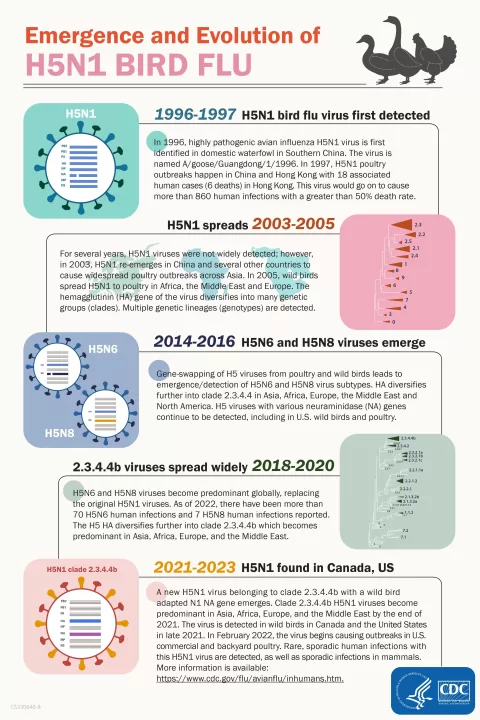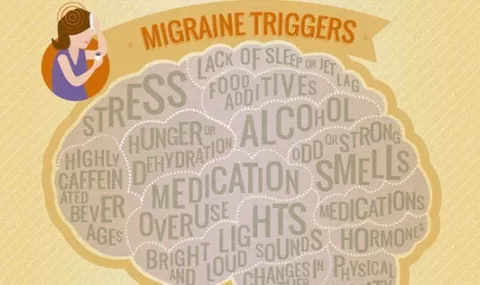The recent Gene Hackman investigation has unveiled a tragic narrative surrounding the deaths of the beloved actor and his wife, Betsy Arakawa. Reports indicate that in the days leading up to her untimely demise, Betsy was actively researching symptoms related to flu and COVID-19, revealing a concerning pattern of illness that ultimately led to her passing from hantavirus pulmonary syndrome. Just a week after her death, Gene Hackman succumbed to heart disease complicated by Alzheimer’s, leaving behind a heartbroken legacy and unanswered questions regarding their health status. As we delve deeper into the investigation, key details such as Betsy’s internet searches and the couple’s final days illustrate the dire circumstances leading to their passing. This tragic tale not only highlights the importance of understanding serious health conditions but also serves as a stark reminder of the fragility of life.
In examining the deaths of Gene Hackman and his partner, the investigation sheds light on the couple’s final hours and the health concerns they faced. The report revealing Betsy Arakawa’s last online searches for flu-like and COVID-19 symptoms offers a haunting glimpse into their struggle with illness. Tragically, Betsy’s battle with hantavirus pulmonary syndrome preceded Gene’s own struggle with heart disease and Alzheimer’s, creating a poignant story marked by the couple’s shared vulnerability. The findings, which include an extensive review of their home and communications, underscore the need for awareness around such diseases, especially in vulnerable populations. As we continue to explore the implications of the findings, the narrative of the Hackmans serves as a reminder of the interconnectedness of health and the unexpected challenges life can present.
Investigation of Betsy Arakawa’s Illness Symptoms
In the days leading up to her tragic death, Betsy Arakawa engaged in extensive online research regarding flu-like symptoms, reflecting her growing concerns about her health. Digital records revealed that her internet searches included inquiries about the symptoms of COVID-19 and other flu-like illnesses, including dizziness and respiratory distress. Unfortunately, her research came too late, as she was ultimately diagnosed posthumously with hantavirus pulmonary syndrome, a rare illness that can mirror common flu symptoms yet carries potentially fatal consequences.
The investigation report highlights Arakawa’s last days, which were fraught with anxiety regarding her health and the health of her husband, Gene Hackman. Reports indicate that she contacted healthcare providers and sought information days before her death. An email sent to a close friend noted that Gene had displayed flu-like symptoms and that they were both taking precautions despite a negative COVID-19 test result. This proactive approach to health issues sadly underscored the severity of their medical condition.
Gene Hackman Investigation and Circumstances of Death
The circumstances surrounding the deaths of Gene Hackman and Betsy Arakawa have sparked significant interest and concern following the release of investigation documents and bodycam footage from the scene. The authorities found both individuals deceased in their home, prompting a thorough investigation to determine the factors leading to their untimely demise. Gene was found a week after Betsy, with heart disease and complications from Alzheimer’s disease being reported as contributing factors to his death.
Investigators initially searched for any signs of foul play but ultimately concluded there was nothing unusual within the home. The presence of rodent feces in the outbuildings suggested potential exposure to hantavirus, correlating with Betsy’s diagnosis, which raised questions about the living conditions that might have contributed to their health deterioration. This investigation sheds light on both the family’s tragic loss and the lingering questions surrounding the health risks posed by living in areas prone to rodent infestations.
Impact of COVID-19 and Hantavirus Symptoms on Health
The COVID-19 pandemic has underscored the critical importance of understanding symptoms associated with viral illnesses. In the case of Betsy Arakawa, similar symptoms of COVID-19 and hantavirus present challenges, as patients might mistake one for the other, thereby delaying effective treatment. As she researched respiratory symptoms, it became evident that understanding these conditions is essential for timely medical intervention.
The overlap of symptoms between COVID-19, the flu, and hantavirus can lead to confusion in diagnosis, emphasizing the need for health education and awareness. Betsy’s case serves as a reminder of the necessity for individuals to seek medical advice promptly when faced with concerning symptoms. This complexity makes public health messaging around symptom identification particularly crucial.
Legacy of Gene Hackman and Betsy Arakawa
The legacy of Gene Hackman extends beyond his illustrious film career; it includes his profound partnership with Betsy Arakawa. Their relationship, marked by mutual support and shared interests, was a notable aspect of Hackman’s life. As documents related to their deaths are analyzed, the narrative of their life together is brought into focus, reminding the public of the personal struggles behind public personas.
Betsy Arakawa’s dedicated care for her husband during his declining health adds to the narrative of love and resilience. Following her passing, the details of their lives together have come under scrutiny, leading to not only sorrow but a renewed appreciation for the value of love and companionship, particularly during challenging health crises. Their shared journey adds a layer of humanity to the story, prompting discussions about aging, health, and the impacts of environmental factors on well-being.
Community Response to the Hackman Tragedy
The deaths of Gene Hackman and Betsy Arakawa have resonated deeply within their community and among fans globally. The outpouring of grief highlights their connection to the public, stemming not just from Hackman’s cinematic achievements but also the couple’s quiet life in Santa Fe. Their passing has prompted discussions about public health, safety, and the often-overlooked risks associated with hantavirus and rodent infestations.
Many have taken this tragedy as a catalyst for raising awareness about the risks posed by rodent-borne diseases, especially in areas where such conditions may be more prevalent. Local community health officials are now more focused on educating residents about preventative measures to mitigate similar risks and promoting broader public health initiatives that could reduce exposure to potential health threats.
Health Findings Post-Investigation
Post-investigation findings regarding the health and living situation of Gene Hackman and Betsy Arakawa have highlighted the risks associated with hantavirus and the importance of vigilance in health assessments. The environmental analysis of their property, revealing rodent activity, raises alarms about the necessity for homeowners to maintain their surroundings to prevent illness. Reports such as these remind the public of how easily health issues can escalate when environmental hazards are present.
Additionally, similarities between hantavirus symptoms and other more common illnesses have reignited conversations about the need for thorough examinations and appropriate testing when respiratory symptoms arise. The health system must adapt to include thorough assessments of potential zoonotic diseases in patients presenting with flu-like symptoms to prevent tragic outcomes like the Hackmans’.
Public Health Implications of High-Profile Deaths
The unfortunate deaths of celebrities like Gene Hackman and Betsy Arakawa often shed light on broader public health issues. Their case brings to the forefront the importance of understanding rare diseases such as hantavirus, which may otherwise be overshadowed by more prevalent threats like COVID-19. The intersection between their tragic story and the ongoing conversations about health safety exemplifies how individual fates can drive collective awareness and policy changes.
Public reactions following such tragedies often include calls for better health guidelines and preventive measures, particularly in homes located in areas known for rodent presence. This could pave the way for enhanced education regarding viral diseases and the associated public health recommendations needed—an essential step toward safeguarding community wellness in similar situations.
Family’s Privacy and the Ethics of Reporting
As details of the Hackman-Arakawa investigation have emerged, discussions around privacy and ethical reporting have gained traction. Gene Hackman’s family has expressed the desire for their privacy to be respected, emphasizing the emotional toll such public scrutiny can take on loved ones. The balance between public interest in the couple’s story and their right to privacy is a complex issue, one that is especially poignant in cases involving tragic outcomes.
Media outlets face the challenge of reporting responsibly while also adhering to ethical guidelines that prioritize the family’s grief and need for closure. Ongoing debates surrounding the release of sensitive information and the impact it has on families highlight the complexities journalists navigate, especially when covering high-profile individuals. This case serves as a critical reminder of the importance of empathy in journalism, particularly when reporting on sensitive health-related issues.
The Role of Health Education in Preventing Illness
Health education plays a pivotal role in empowering individuals to recognize symptoms early and seek appropriate care. The tragic cases of Betsy Arakawa and Gene Hackman demonstrate that even in times of uncertainty, understanding health-related information can be vital. Conducting research on symptoms, like Betsy did, can be the first step towards addressing a potentially serious health issue, but community education initiatives are crucial to enhancing public knowledge on diseases that present overlapping symptoms.
Initiatives to improve public awareness about virus transmission, symptom identification, and the importance of seeking early medical intervention are essential. Communities must be engaged proactively, educating residents about zoonotic diseases like hantavirus, particularly in regions at risk. By encouraging individuals to learn about the health threats associated with their environment, similar tragedies can potentially be prevented in the future.
Frequently Asked Questions
What were Betsy Arakawa’s last online searches related to the Gene Hackman investigation?
Betsy Arakawa’s last online searches before her death, as part of the Gene Hackman investigation, included queries about flu-like symptoms, breathing techniques, and COVID-19 symptoms. This research indicates she was concerned about health issues that could lead to her eventual diagnosis of hantavirus.
What illness did Betsy Arakawa have prior to her death in the Gene Hackman investigation?
According to the Gene Hackman investigation, Betsy Arakawa died from hantavirus pulmonary syndrome. In the days leading up to her death, she researched flu-like illness and COVID-19 symptoms, raising concerns about her health.
How did Gene Hackman die shortly after Betsy Arakawa in relation to the investigation?
In the Gene Hackman investigation, it was revealed that Gene Hackman died approximately one week after his wife, Betsy Arakawa, due to heart disease complicated by Alzheimer’s disease. They were both found deceased in their Santa Fe home.
What were the details surrounding Betsy Arakawa’s symptoms leading up to her death, as found in the Gene Hackman investigation report?
The Gene Hackman investigation report detailed that Betsy Arakawa was actively researching flu-like symptoms and COVID-19-related information before her death. She had noted that Gene Hackman experienced similar symptoms, although a COVID test returned negative.
Was there any indication of foul play in the Gene Hackman investigation?
The Gene Hackman investigation found no signs of forced entry or foul play in their Santa Fe home. The authorities reported that nothing unusual was discovered during the investigation of their property.
What were the environmental findings related to the hantavirus in the Gene Hackman investigation?
In the Gene Hackman investigation, environmental assessments revealed rodent feces in several outbuildings on the property, which is significant as hantavirus is rodent-borne. However, no rodent signs were found within the main living areas of their home.
What steps are authorities taking following the conclusions of the Gene Hackman investigation?
Following the Gene Hackman investigation, authorities plan to release additional redacted police body camera footage from inside their home to further clarify the events that led to the deaths of Gene Hackman and Betsy Arakawa.
| Aspect | Details |
|---|---|
| Wife’s Searches | Betsy Arakawa researched flu and COVID-19 symptoms before her death. |
| Cause of Deaths | Betsy Arakawa died from hantavirus pulmonary syndrome; Gene Hackman died a week later from heart disease complicated by Alzheimer’s. |
| Investigation Report | A report from authorities revealed Betsy’s last internet searches and emails prior to her death. |
| Location of Discovery | The couple was found deceased in their Santa Fe home on February 26, 2025. |
| Environmental Assessment | Rodent feces were found in outbuildings; no signs of forced entry were reported. |
| Aftermath | Additional police body camera footage is expected to be released as the investigation continues. |
Summary
The Gene Hackman investigation into the couple’s tragic deaths sheds light on the final days of Betsy Arakawa’s life, who was reportedly researching symptoms related to flu and COVID-19 prior to succumbing to hantavirus. Both Gene Hackman and Betsy Arakawa were discovered deceased in their Santa Fe home, prompting an extensive investigation that revealed key details about their health leading up to their deaths. This unfolding story highlights not only the urgency around understanding hantavirus and its symptoms but also the profound impact of health issues related to aging.
The content provided on this blog (e.g., symptom descriptions, health tips, or general advice) is for informational purposes only and is not a substitute for professional medical advice, diagnosis, or treatment. Always seek the guidance of your physician or other qualified healthcare provider with any questions you may have regarding a medical condition. Never disregard professional medical advice or delay seeking it because of something you have read on this website. If you believe you may have a medical emergency, call your doctor or emergency services immediately. Reliance on any information provided by this blog is solely at your own risk.







